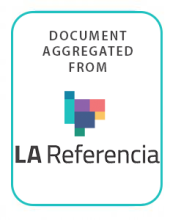Land Library
Welcome to the Land Portal Library. Explore our vast collection of open-access resources (over 74,000) including reports, journal articles, research papers, peer-reviewed publications, legal documents, videos and much more.
/ library resources
Showing items 1 through 9 of 20.As investments in nature are needed more than ever, and are increasingly gaining traction, the challenge is to identify environmental and social risks and to demonstrate positive impacts associated with investing in nature-based projects in a standardized and comparable manner.
We cannot live without healthy land and soil. It is on land that we produce most of our food and we build our homes. For all species — animals and plants living on land or water — land is vital.
Trends.Earth (formerly the Land Degradation Monitoring Toolbox) is a platform for monitoring land change using earth observations in an innovative desktop and cloud-based system.
The study examines long-term land use/land cover change (LUCC) at a finer scale in a semi-arid region of India.
In the last decade, there have been a number of global/regional targets and initiatives to halt and reverse land degradation and restore degraded land.
Land change in the Greater Antilles differs markedly among countries because of varying socioeconomic histories and global influences. We assessed land change between 2001 and 2010 in municipalities (second administrative units) of Cuba, Dominican Republic, Haiti, Jamaica, and Puerto Rico.
Los Sensores Remotos se han convertido en los últimos tiempos en una herramienta importante para la planificación territorial, debido a la originalidad metodológica con la cual operan y el amplio espectro de observación de la superficie terrestre.
Las características espaciales de las ciudades resultan decisivas en los principales problemas urbanos: la calidad de vida, la movilidad, el consumo energético y de materiales, etcétera.
En este número sobre suelos hemos planteado una serie de preguntas clave: ¿debe extenderse o comprimirse el suelo urbano? ¿Quién asume los costos y quién recibe las ganancias? ¿Contribuye esa respuesta a la igualdad entre los habitantes de la ciudad?


